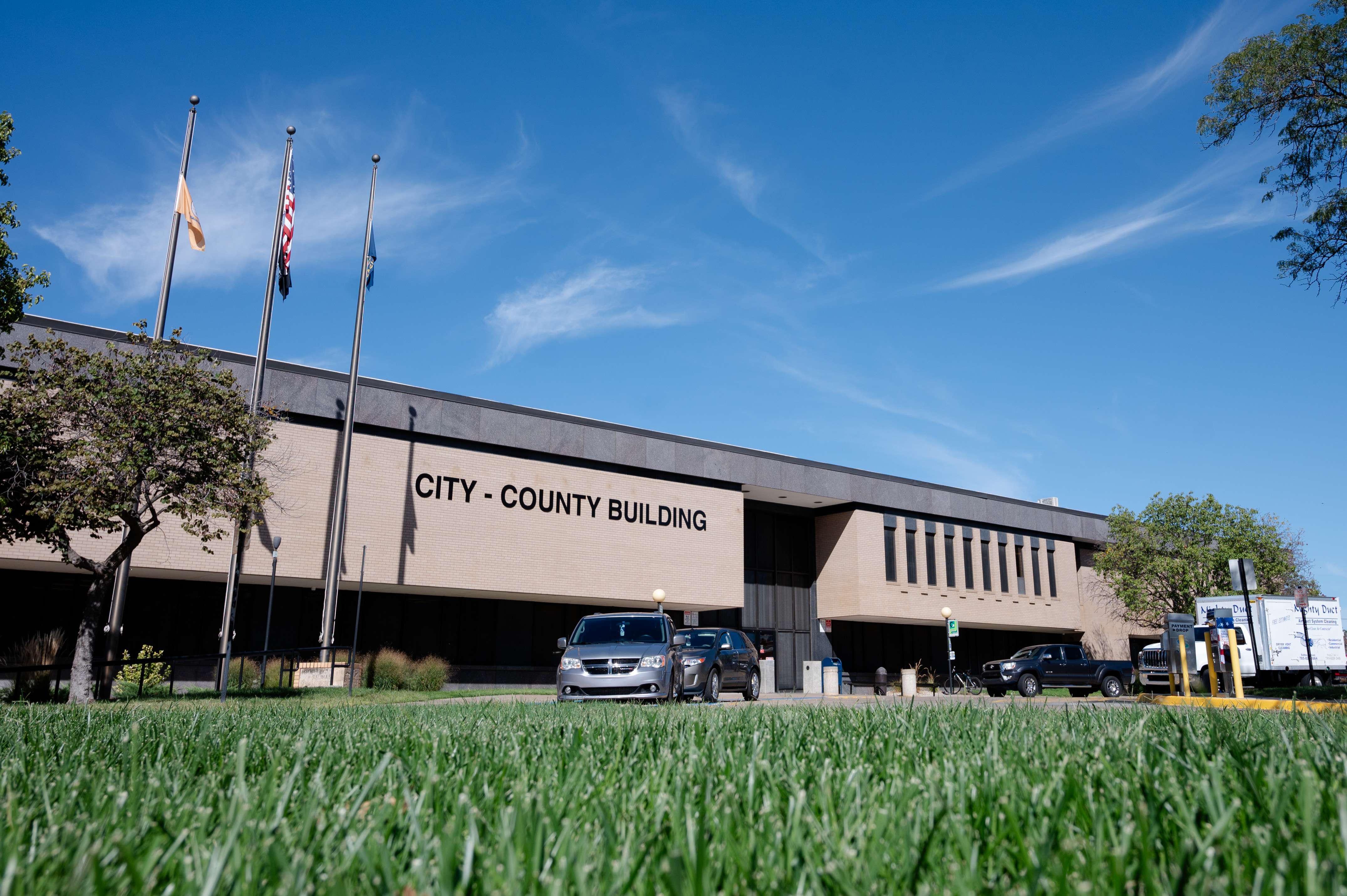
By NATE KING
Salina Post
At their Monday study session meeting, Salina City Commissioners received an update regarding the groundwater clean-up efforts at the former Schilling Air Force Base. During the commission's regular meeting, they voted to award a bid to T&R Construction to excavate a portion of the polluted area.
In April of 2021, the Salina City Commission approved the consulting and engineering contract with Dragun Corp., which drafted plans to clean up underground water plumes containing pollutants located at the former base.
According to the Salina Airport Authority, years of military use left behind several different forms of pollution, primarily from the solvent trichloroethylene, or TCE, in the soil and groundwater.
"In the 1940s, 1950s, and early 1960s, when the Schilling Air Force Base was here they weren't as cautious about contaminants as we are today," Tasker said. "Now we can test for PFAS [per-and poly-fluoroalkyl substances] out at the airbase, and we test down to 70 parts per trillion."
TCE, a carcinogen, was used as a degreaser to wash aircraft and weapons at the base. Officials also determined the contamination was creeping, ever so slowly, to the northeast toward city water wells.
Tim Rogers, executive director for the Salina Airport Authority told commissioners the pollution was first discovered in the 1990s.
"The early work with the U.S. Army Corp of Engineers began in the year 2000 so it has been a long process... actually at times a very adversarial process," Rogers said. "The Army Core of Engineers kind of wanted to walk away from this site and leave it up to the community to take care of it."
READ MORE: U.S. Sen. Jerry Moran announces more than $33 million investment for K-State Salina
Initial funding for the project came after a lawsuit was filed against the federal government by the Kansas Board of Regents, USD 305, the Salina Airport Authority, and the city of Salina. The lawsuit resulted in a settlement of $69.5 million.
With the settlement fund now on deposit, the Salina public entities can begin the clean-up at little to no cost to existing and future businesses located near the polluted areas.
There are a total of 11 underground polluted plumes located on the old grounds of Schilling Air Force Base. From southwest to northeast, these plumes stretch across Salina Airport Authority property with the nearest municipal water well 1.5 miles away.
"This solution and moving ahead on this process has been essential for the growth and developement of the airport industrial center," Rogers said. "Projects like the Schwan's expansion, GeoProbe and new construction at K-State...these projects and this capital investment and job creation does not occur without this project in place."
Martha Tasker, Salina director of utilities, co-manages the project with Matt Schroeder senior environmental engineer at Dragun Corp.
At Monday's study session meeting, Schroeder presented a remediation update to commissioners, specifically outlining the clean-up at Plume B and future projects at the site.
"The idea for the remediation design was to address the highest risk areas first, and then over time, try and work on cleaning up the whole plume," Schroeder

During Schroeder's presentation, he outlined the different techniques specialized contractors use to return the polluted soil and groundwater to its original state. They are:
● Excavation and off-site disposal
Physically removing contaminated soil and taking it to another location outside the county. Soil that is identified as non-hazardous would be sent to the local landfill and any soil deemed hazardous would be sent to a special facility.
● Thermal treatment
The process of heating about 6,000 square feet of contaminated soil using heaters placed in underground steel pipes. Once the soil is heated, the contaminants will evaporate into gasses. The gasses are then collected, treated, and discharged. The thermal treatment plan would be completed in 160 days, and would cost $8.7 million.
● Permeable reactive barriers
Walls of reactive materials installed underground that would react with contaminants in groundwater to form less toxic or harmless chemicals. These barriers would cost $14.6 million.
● Directed groundwater recirculation
Wells built to extract and treat groundwater and reinject it back into the aquifer. This process is the most expensive part of the proposed remediation, for $54.5 million.
Excavation and off-site removal, dig and haul method, is the technique selected for remediation of Plume B. Tasker said this method would be used for very small areas that have an identified source point, or point where the pollutants are emanating from.
"Depending on what it is, you're going to travel some distance and they [waste disposal sites] come with a very expensive price tag," Tasker said.
City commissioners voted 5-0 in approval of awarding a bid to T & R Construction to excavate, transport and dispose of polluted ground and water located in Plume B.
The start date for digging and hauling polluted materials from Plume B is anticipated to begin during the second quarter of 2024 and will cost $352,160. City staff said it will take five months to complete the work.
The total cost to clean up Plume B is $3.3 million. Money to pay for the remediation at the site comes from the Former Air Force Base Environmental Fund, which has a balance of $66,603,423.65 as of March 18, 2024





